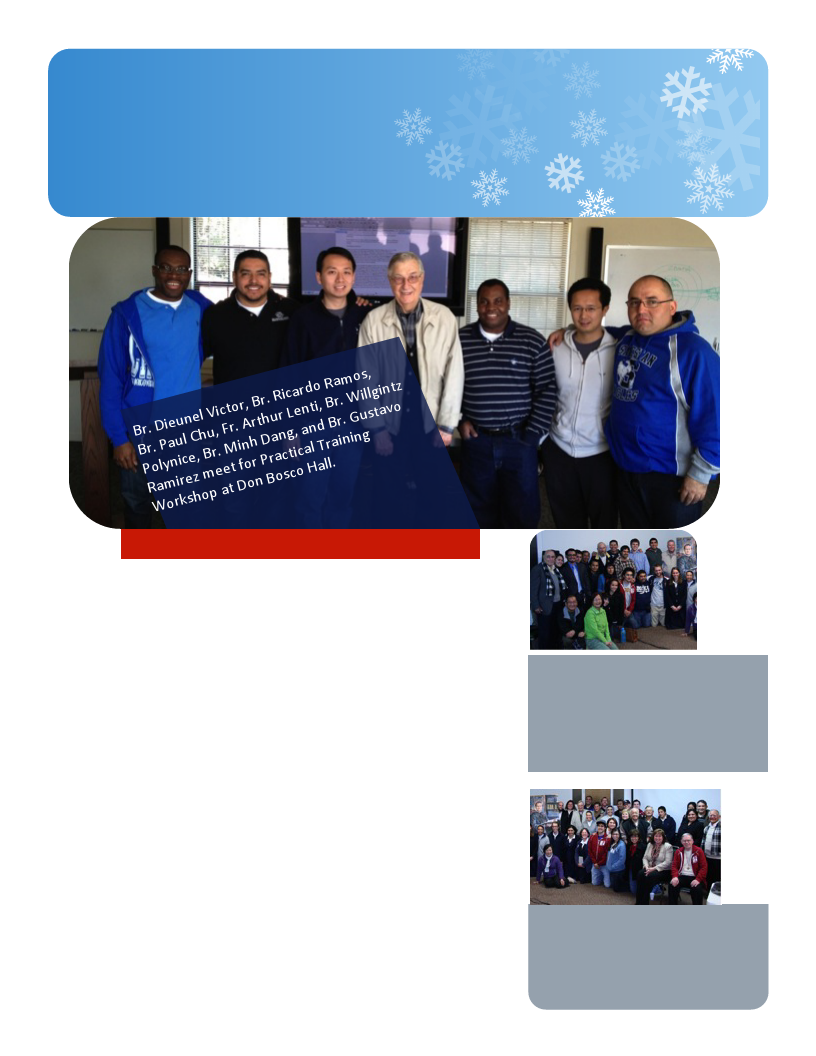
3
February Study Guide 2012
Key
Historical
Figures
(continued)
Excerpted
from
Don
Bosco
Builder,
Arthur
Lenti...
Under that reign, Cavour carried the authority of the King, but
that would end by 1848. Despite Don Bosco’s appeal to his
obedience to the archbishop, the Marquis called a meeting of his
city council at the residence of the archbishop who was rather ill
at that moment. The council decided definitively to block all of
Don Bosco’s meetings as a threat to public securtiy. This ban would
last for 6 months until Cavour fell ill. In June 1847, the city guards
were called off.1 During this illness, Don Bosco often visited the
sick Marquis and garnered favor and even financial support from the
sick man. It was during this time that Don Bosco became familiar
with his sons Camilo and Gustavo. A subsidy of more that 300 lire
came to the Oratory annually until 1877. In the following year, an
anti-clerical shift was apparent.
King Charles Albert
King Charles Albert clung to a throne presiding over the
region of Piedmont at a precarious interval between the Napoleanic
occupation and the anti-clerical and unifying forces of a new form of
government on the rise—a government seeking national unity and
freedom from monarchies. The king was fully aware of the growing
sentiment, especially during those years of Restoration, and did all
in his power to suppress any movement toward a constitution. A
movement that would deal the king a rattling blow began in 1831
under Giuseppe Mazzini; it was another secret movement called
“Young Italy.”1 The notes in the Memoirs of the Oratory English
translation offer many insights into the significance of such secret
societies and their impact on the life of a young clerical student,
John Bosco. It is suggested there that his founding of the Societa
dell’allegria was an innocent imitation of such groups but for vastly
different reasons.
During the 1840s, King Charles Albert faced the rising
tensions between the Kingdom
of Sardinia and the Austrian
Empire.
Austria was
occupying Venice, Lombard,
and Tuscany among other
states in the northern peninsula.
A note of interest in the MO,
English Translation is the fact
that Don Bosco tolerated the
games of the boys playing with
wooden rifles, “the Italians”
versus “the Austrians.” At the
hieght of these games the
famous incident of the boys
destroying Mama Margaret’s
ArchBishop
Gastaldi
For
a
closing
comment,
it
bears
repeating
that,
neurotic
and
unreasoning
though
he
is
made
to
appear
in
the
Biographical
Memoirs,
Gastaldi
was
proceeding
from
clearly
defined
premises.
He
was
truly
concerned
with
clergy
reform
and
formation;
he
was
particularly
sensitive
and
protective
with
regard
to
his
own
seminary
program;
and
he
saw
Don
Bosco’s
recruiting
and
formation
practices
as
a
threat.
Add
to
this
his
unimpeachable
conviction
that
it
was
his
right
and
his
duty,
as
ordinary,
to
ascertain
the
suitability
and
worthiness
of
candidates
for
ordination,
whether
secular
or
regular.
After
all,
as
Desramaut
aptly
remarks,
Salesian
candidates
had
not
lived
in
a
closed
seminary
community;
they
did
not
reside
in
monasteries
away
from
the
world;
they
claimed
to
be
preparing
themselves
intellectually
and
spiritually
while
fully
engaged
in
activities
of
a
largely
secular
nature.
And
the
ordinary
was
being
asked
to
confer
orders
on
such
candidates
without
the
possibility
of
ascertaining
their
suitability.
Further,
he
could
not
discount
the
real
possibility
that,
once
ordained,
they
might
choose
to
return
to
the
diocese.
In
conscience,
therefore,
as
well
as
in
virtue
of
Church
law
in
force,
the
archbishop
felt
obliged
to
examine
Salesian
candidates
on
the
subject
of
their
“vocation,”
that
is,
religious
formation,
and
on
their
real
suitability
for
priestly
ministry.
Nor
did
he
wish
to
see
presented
as
Salesian
candidates
for
ordination
his
former
seminarians
who,
after
leaving
or
after
having
been
dismissed
from
the
seminary,
had
been
accepted
by
Don
Bosco.1
No
doubt,
throughout
the
distressing
developments
of
the
confrontation
that
followed,
misunderstandings,
frustration,
anger,
spite,
and
even
unworthy
motives
played
a
part.
But
the
conflict
can
be
neither
explained
nor
understood
merely
in
those
terms.
Real
issues
and
real
points
of
view
were
involved
that
had
larger
reference
than
the
character
of
the
protagonists.
5


















